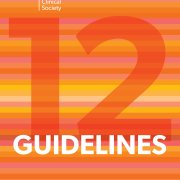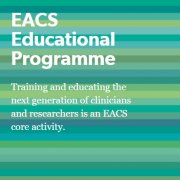Plenaries Synopses
Introduction to pathophysiology of HIV
Clinical
August 30, 2018 - 9:00-9:30
Since the dawn of our species, humans have lived in constant interaction with microbial agents able to cause disease. Retroviruses are not an exception. Although the debate about the origin of HIV remains open, most scientists agree that approximately 120 years ago, a close ancestor of HIV-1 highly related to current Simian Immunodeficiency Viruses (SIVs), was transferred from monkeys to humans in the region comprised between the Niger and Congo rivers in West Africa. SIV-related viruses have clear pathogenic potential in humans and macaques. However, they are nonpathogenic in their natural hosts –despite being characterized by relatively high viral loads in peripheral blood and tissues. Natural defense mechanisms like the APOBECG and TRIM-5-alfa proteins play a major role in restricting retroviral infections, but often fail to protect against retroviruses from different species. Humans were thus not prepared for the irruption of HIV, a virus that thrives by infecting precisely the immune cells in charge of eliminating viral infections and subverting the immune system to its own replicative advantage. The challenges posed by HIV to our species are unprecedented. Even if we can mitigate the effects of HIV infection quite effectively with antiretroviral drugs, we cannot eradicate HIV and, given the current knowledge, it is uncertain if an effective vaccine will be generated anytime soon. HIV combines five characteristics no known human pathogen exhibited before. In order to treat HIV infection properly and to devide effective cure strategies, we need to be aware that we are not confronting a single agent, but a swarm of genetically related variants infecting each single patient. Therefore, it is paramount to understand the determinants of such diversity and to develop tools than allow us to study the quasispecies structure and dynamics with more detail.
Speaker: Dr Roger Paredes (Spain)
Drug resistance of HIV
Clinical
August 30, 2018 - 9:30-10:00
Speaker: Dr Annemarie Wensing (The Netherlands)
State of the ART of ARV therapy
Clinical
August 30,2018 - 10:00-10:30
Currently HIV infection can be controlled long term with potent, safe and convenient antiretroviral therapy that leads to prolonged healthy survival in our patients. This session will cover the current treatment guidelines, explore factors to consider when choosing a regimen and review the newer strategies, formulations and agents that will continue to move HIV treatment forward.
Speaker: Dr Nicola Mackie (United Kingdom)
Why is research important?/Choosing the right study design
Research
August 30,2018 - 11:00-11:30/11:30-12:00
As conducting research has many resource implications, our aim is to conduct the “best” research that we can, giving ourselves the best chance of success. After identifying and defined a clear research question (we may use the PICO approach to do this), we then select the most appropriate study design that will allow us to answer the question. In this session I will describe the most commonly used study designs (randomised controlled trials, cohort, case-control and cross-sectional studies), giving examples of each, and will describe their pros and cons. Participants will then discuss appropriate study designs for a range of practical examples.
Speaker: Prof. Paddy Mallon (Ireland)/Prof. Caroline Sabin (United Kingdom)
P-values and hypothesis testing/Confidence intervals
Research
August 31,2018 - 8:30-9:00/9:00-9:30
Presentations of data in the medical world are littered with p-values. But what do these p-values really tell us, and is a P-value <0.05 really that important? In this lecture we will start by illustrating how the P-value can help us to differentiate real findings from associations which may occur by chance. We will then demonstrate the general principal of hypothesis testing, using worked examples to illustrate not only how they can be interpreted, but also some of the problems that may be encountered when relying solely on p-values for this purpose. We will then demonstrate how confidence intervals can be used to supplement the information that is provided by the P-value. Participants will then have the opportunity to put their knowledge into practice using real-life examples from the published literature.
Speaker: Dr Valentina Cambiano (United Kingdom)/Prof. Caroline Sabin (United Kingdom)
Optimizing ART in the suppressed patient
Clinical
August 31,2018 - 10:45-11:25
Treatment strategies have moved forward a key achievement with the universal recommendation to treat any HIV infected individual regardless of CD4. In the absence of any cure/remission strategies long life therapy is a mandatory condition to maintain viral suppression leading to mormalized life and no transmission. As a consequence of earlier initiation therapy in patients with better immunovirological status , using more potent drugs ,management of virally suppressed patients has evolved towards reducing drug burden using alternative strategies in order to minimize long term exposure , reducing drug long term toxicity and potentially minimizing costs . Learning the best proven strategies, their benefits and how to individualize ART in different settings is a major issue for HIV physician with the objectives of leading HIV infected individuals towards several decades of suppressive ART taking into account the incident events of life time as aging comorbidities.
Speaker: Prof. Christine Katlama (France)
Management & prevention of co-morbidities
Clinical
August 31,2018 - 11:25-12:05
Despite improvements in life expectancy with effective antiretroviral therapy, people living with HIV still experience excess morbidity and mortality from long-term co-morbidities. These include cardiovascular disease, liver disease, bone disease and cancers. Accumulating evidence suggests that residual inflammation that persists despite treatment significantly contributes to many of these co-morbidities, along with lifestyle factors and lesser contributions from some therapies. Understanding the pathogenesis underlying the increased risk of co-morbidities is essential to the appropriate prevention and management of these conditions.
Speaker: Prof. Paddy Mallon (Ireland)
HIV & malignancies
Clinical
August 31,2018 - 12:05-12:45
Cancer, both AIDS-defining or non-AIDS-defining cancers (NADCs), has become the leading cause of death in people living with HIV, associated with an increase in the incidence of some NADCs compared to the general population, including lung cancer, hepatocellular carcinoma, head and neck cancers, anal cancer, and Hodgkin lymphoma. Incidence of NADCs should be expected to increase further as the PLWH population continues to age. This session will provide an update on epidemiology and the identification of risk factors to determine the most appropriate prevention and screening strategies in this population. Cancer management in HIV patients is based on general recommendations, with specific attention to comorbidities or drug interactions and some special considerations for cancer treatment in these patients will be discussed.
Speaker: Prof. Stéphane De Wit (Belgium)
Hepatitis B / Hepatitis C
Clinical
September 1,2018 - 8:30-9:05
Liver disease remains a major cause of morbidity and mortality in HIV-positive individuals. This session will provide an update on the epidemiology of viral hepatitis and HIV co-infection. An update on the current management of HBV will be discussed. Directly Acting Antivirals (DAAs) against HCV have revolutionised HCV management. Micro-elimination in subgroups of patients may be a realistic possibility in the near future. However there are barriers that need to be overcome. Non-alcoholic fatty liver disease (NAFLD) is an increasingly recognised problem over recent years. Understanding the pathophysiology and natural history in HIV-positive individuals will be important in order to design optimal management pathways.
Speaker: Dr Sanjay Bhagani (United Kingdom)
Opportunistic infections
Clinical
September 1,2018 - 9:05-9:40
Antiretroviral therapy (ART) has contributed to decline of opportunistic infections. However, they still occur amongst People Living with HIV (PLHIV) who fail ART or present late to care. Tuberculosis is responsible for significant mortality and morbidity amongst PLHIV especially in Low and Middle-Income settings. This lecture will discuss recent advances on management and prevention of common opportunistic infections amongst PLHIV.
Speaker: Prof. Sanjay Pujari (India)
HIV prevention strategies
Clinical
September 1,2018 - 9:40-10:15
Transmission of HIV is preventable. Whilst treatment of people living with HIV is key, Pre Exposure Prophylaxis for sexual risk and Post exposure prophylaxis for sexual or occupational risk are both highly effective with well tolerated regimens now available for use. Assessment of risk and additional risk reduction strategies are also important to discuss with high risk individuals. EACS have produced clear guidelines on the management and follow-up for PrEP and PEP. Newer agents/methodologies and different patient populations are being assessed for PrEP so data is continually evolving. Understanding the evidence base for PEP and PrEP is an important part of HIV and Sexual Health Care.
Speaker: Prof. Yvonne Gilleece (United Kingdom)
Developing a clinical research programme
Research
September 1,2018 - 10:45-11:30
There are recognised structures around the design, conduct and reporting of clinical research. Knowledge of this structure permits the researcher to conduct quality research and provides a platform upon which to build research programmes within a disease area. This presentation will offer personal insights from research leaders on how to use knowledge gained through implementation of simple research projects to build progressively larger and more ambitious research projects and ultimately international, collaborative programmes of research.
Speaker: Prof. Paddy Mallon (Ireland)
Modeling and health economics
Research
September 1,2018 - 11:30-12:15
Whether you live in Norway or in Malawi, healthcare resources will be limited and choices will need to be made about which healthcare interventions to fund or not. Health economics and in particular cost-effectiveness analysis can help inform policy makers on how to efficiently use limited available resources to gain the most health benefits for their population. These can be helpful when considering the introduction of new health technologies and when assessing whether services offered are efficient or not and whether they could be scaled back to make savings. In order conduct this analysis it is often necessary to use models. In this talk we will discuss the rationale for using health economics, what is the value of conducting such analyses and why modelling is needed and we will briefly see how these analyses are undertaken.
Speaker: Dr Valentina Cambiano (United Kingdom)
What to look for in a presentation/paper
Research
September 2,2018 - 8:30-9:15
The plenary session 'What to look for in a presentation/paper' covers the general principles of critically reading a research paper and finding the relevant information in the various sections of the publication, including the title and the abstract, in addition to the text, tables and figures. The presentation is based on the concepts presented in the previous sessions on study design, analysis, and interpretation and is aimed at explaining where to find the key elements in scientific papers or congress presentation. These principles are illustrated using a worked example from the most recent literature in the HIV clinical research domain. Finally, the Equator-network web address including all reporting guidelines is provided.
Speaker: Prof. Dominique Costagliola (France)
Identifying bias
Research
September 2,2018 - 9:15-10:15
When carrying out and appraising research, we must always be aware of any potential limitations of the study. Many studies, particularly observational studies, are related to the potential for bias to occur and therefore we must consider the likely impact of any potential biases on our study. In this talk we will define what is meant by ‘bias’ and will describe several commonly seen biases in the published literature, illustrating each by real-life examples. We will focus particularly on the possibility of confounding bias, as this is particularly problematic in observational studies, and will discuss possible approaches to minimise the impact of any such bias.
Speaker: Prof. Caroline Sabin (United Kingdom)

20th European AIDS Conference
15-18 October 2025 Paris, France

EACS Guidelines updated
The EACS 12.0 and the app are available for free on

Educational Programme
Training and educating the next generation of clinicians and researchers is an EACS core activity.

EACS Resource Library
Access all scientific content of EACS core activities! (members only)